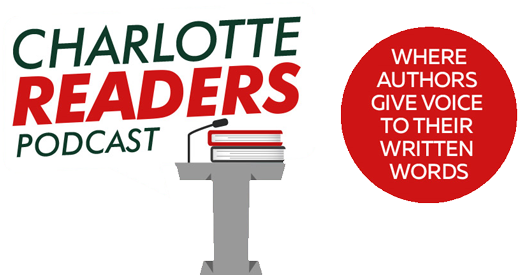What is a Rollerblading Moment, and Why Do You Need One for Your Story?
Writer: Emily Cantaneo
The first few pages of Jenny Offill’s excellent 2014 novel Dept. of Speculation are, to be frank, floaty. The main character wanders through a series of factoids and anecdotes, occasionally addressing an unknown you. It’s not clear where the narrative is going; it’s not clear what the reader should be watching out for.
But within those first few pages, Offill offers up the following anecdote:
“I met an Australian who said he loved to travel alone. He talked about his job as we drank by the sea. When a student gets it, when it first breaks across his face, it’s so fucking beautiful, he told me. I nodded, moved, though I’d never taught anyone a single thing. What do you teach, I asked him. Rollerblading, he explained.”
When I first read Dept. of Speculation, I laughed out loud at that kicker. Rollerblading! Okay, I thought. I trust this author. I’m going to follow her and see where she’s going with this.
I’m not the only one who’s had this reaction. I teach this opening in my novella class at the Redbud Writing Project, and when I ask my students for their thoughts, the first passage they bring up is this rollerblading anecdote. It’s hilarious, they point out, but it’s also poignant at the same time. It does a lot of work in capturing our interest.
I’ve been thinking lately about this kind of passage in fiction, which I’ve been calling a “rollerblading moment.” Clearly, for me and my students, this rollerblading moment captured our interest and persuaded us to give this author a shot.
Why are rollerblading moments so effective? I have a couple theories:
- They are impressive because of their economy. Notice that Offill doesn’t need to take pages upon pages to show us that she is clever, observant, funny, and emotionally affecting. She does it with a handful of words, with one anecdote. This restraint is impressive and makes the reader eager to see what other feats Offill has in store for us.
- They make us trust the writer. This kind of keenly observed moment shows us that we’re in the hands of someone with a clear eye, a finely tuned ability to observe the world around her and distill it into a narrative. Even if the beginning of the book feels floaty and random otherwise, a moment like this makes us stick with it—it makes us trust that the author knows what she’s doing and that she’s leading us somewhere, even if we can’t see it yet.
- They make us laugh. Humor is perhaps one of the most difficult elements to include in fiction, since it’s so subjective. But when done well, it’s such an effective way to endear your reader to you and to make them excited about continuing.
- They surprise us. At the beginning of this passage, we’re led to believe that the narrator is going to hear about the Australian teaching students how to perform CPR or write their memoirs. When we read the word “rollerblading,” we are delighted by the surprise, and this makes us look forward to other potential surprises in the text.
As you can see, rollerblading moments are wonderful ways to hook your reader, invest them in your book and persuade them to follow you wherever you might lead them. But you’re probably asking yourself: how do I come up with a rollerblade moment? Here are some tips and tricks to get you started.
- Don’t force it. There’s nothing worse than forced cleverness or insight. If you’re sitting in your chair and obsessing over that perfect, economical anecdote, chances are you’re not going to come up with one. Instead, make a note in your piece where you’d like the anecdote to go and come back to it later.
- Take notes. Did someone tell you a wild story? Did you observe something noteworthy or funny? Write it down! Even if you’re not sure where it will fit in your piece and even if it doesn’t have an arc or a kicker yet, put it in your notes and let it sit. You never know when you might need it.
- Combine different sources of inspiration. One imagines Offill overhearing a conversation about the beauty and power of teaching. One also imagines her seeing some rollerbladers painstakingly learning their sport. Don’t be afraid to combine anecdotes or threads from your own life, conversations that you’ve had, and/or things that you’ve made up into that one perfect rollerblading moment.
So go forth and search for your own rollerblading moment, and see what kind of energy, power, and propulsion it can lend to your narrative!
About the Writer:
 Emily Cataneo is a writer and journalist, as well as the cofounder of the Redbud Writing Project, an adult education creative writing school in Raleigh, North Carolina. Through Redbud, she teaches classes in writing the novel, fiction, memoir, creative nonfiction, and more. As a writer, her work has appeared in venues such as Smokelong Quarterly, Indiana Review, Lightspeed, the Guardian, NPR, the Boston Globe, Slate, and many more. She likes dogs, traveling, and history.
Emily Cataneo is a writer and journalist, as well as the cofounder of the Redbud Writing Project, an adult education creative writing school in Raleigh, North Carolina. Through Redbud, she teaches classes in writing the novel, fiction, memoir, creative nonfiction, and more. As a writer, her work has appeared in venues such as Smokelong Quarterly, Indiana Review, Lightspeed, the Guardian, NPR, the Boston Globe, Slate, and many more. She likes dogs, traveling, and history.
Website: redbudwriting.org
Writer’s Patreon episode, HERE.
